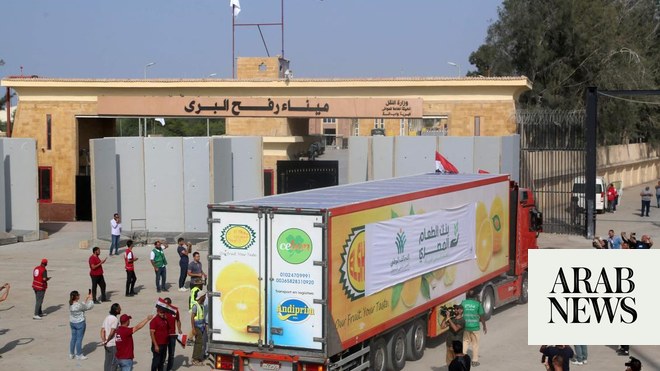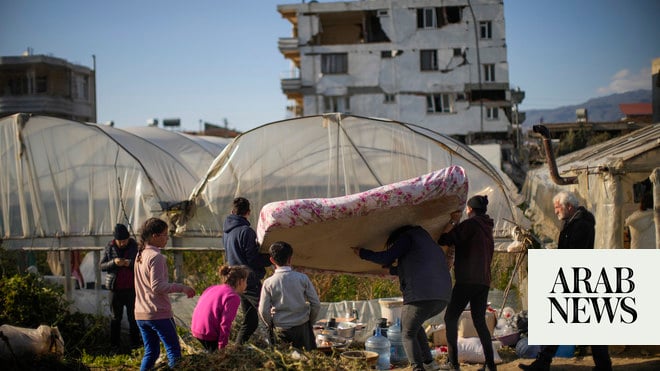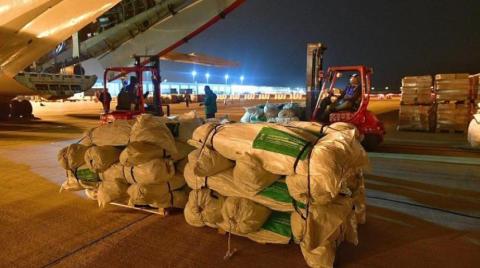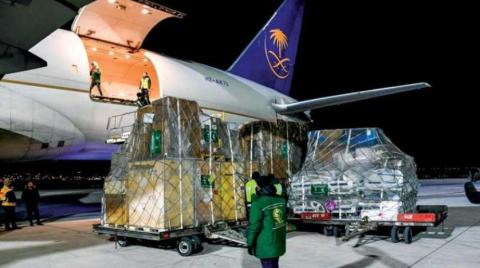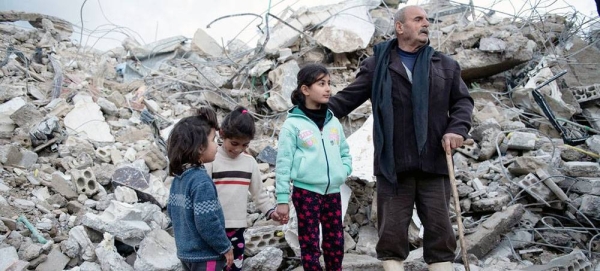
A second UN aid convoy reached northwest Syria on Friday to help victims of the still-unfolding earthquake tragedy, but humanitarians have warned that far more lifesaving help is needed, and much more quickly.
A total of 14 trucks crossed into opposition-held areas of Syria from Türkiye at Bab Al-Hawa, the UN migration agency, IOM, confirmed.
That crossing is the only one authorized for aid deliveries by the UN Security Council, which has prompted calls — including from the Secretary-General — “to explore all possible avenues to get aid and personnel into all affected areas”.
Echoing the growing international calls for quicker and easier access into northwest Syria via new routes, the UN World Food Program (WFP) said that it was ready to move supplies there, although roads had been damaged by Monday’s earthquakes.
“That slows down our deliveries,” said Corinna Fleischer, WFP Regional Director in the Middle East, Northern Africa and Eastern Europe.
“We need to be able to go across the borders, we need customs officials to be there in sufficient numbers...We need all parties to do the right thing now.”
Crossline deliveries need to restart and be stepped up from Government-controlled areas into opposition territory, the WFP official insisted, as she explained that a full 90 percent of people in the northwest depend on humanitarian assistance.
Prepositioned stocks supplied by crossline deliveries that were carried before the earthquakes are being distributed already, the UN refugee agency (UNHCR) said, adding that it hoped an agreement with the government would allow for “fast and regular access” to the northwest.
“We are running out of stocks and we need access to bring new stocks in,” Fleischer said, as she noted calls for the crossing at Bab al-Salam — also into northwest Syria — to be reopened.
In the first four days since deadly earthquakes struck the region, WFP has delivered food assistance to 115,000 people in Syria and Türkiye, it reported.
More than 22,000 have died, according to latest reports, and many tens of thousands are too scared to move back into buildings that they fear may collapse, forcing them to sleep in cars, tents and anywhere else they can find shelter, amid freezing winter temperatures.
Hot meals, ready-to-eat food rations and family food packages that require no cooking facilities have been provided already by WFP.
“For the thousands of people affected by the earthquakes, food is one of the top needs right now and our priority is to get it to the people who need it fast,” Fleischer said.
In total, WFP requires $77 million for food rations and hot meals to 874,000 quake-affected people in Türkiye and Syria. This includes 284,000 newly displaced people in Syria and 590,000 people in Türkiye, which includes 45,000 refugees and 545,000 internally displaced people.
Emergency and search-and-rescue teams have deployed to assess and prioritize urgent needs and to provide life-saving assistance following the devastating earthquake near the Türkiye-Syria border.
In another update, the UN World Health Organization (WHO) said that it had released medical supplies in northwest Syria to 16 hospitals treating survivors of Monday’s earthquakes.
On Thursday, medical and surgical trauma supplies from the WHO’s logistical hub in Dubai also reached Türkiye, but needs remain massive, with hundreds of clinics in both Türkiye and Syria damaged in the disaster, along with many hospitals.
Specialist international emergency medical teams coordinated by the WHO have been deployed “and there will be more coming” to complement the national teams already hard at work, said WHO spokesperson, Dr. Margaret Harris.
“We provide a much wider range of services as appropriate and needed,” Dr. Harris continued, not least for mothers anxiously preparing to give birth. “Of course, we do indeed have the trauma specialists, the people who can deal with multiple fractures, crush injuries, know how to deal with the complications and can bring in their expertise and also their specialist equipment.”
As the UN and partners step up the aid effort, the UN refugee agency, UNHCR, said that some 5.3 million people in Syria may have been left homeless by the disaster at the start of the week.
“There are 6.8 million people already internally displaced in the country. And this was before the earthquake,” said Sivanka Dhanapala, UNHCR Representative in Syria, speaking from Damascus.
Providing shelter and relief items remains the focus of the UNCHR response, and ensuring that collective centers for displaced people have adequate facilities, tents, plastic sheeting, thermal blankets, sleeping mats and winter clothing.
The UN sexual and reproductive health agency UNFPA, said late on Friday that it has begun distributing 60,000 dignity kits to women and girls in the worst-affected areas of northwest Syria.
On Saturday, UNFPA plans to send two trucks from Türkiye as part of a cross-border convoy, carrying 330 reproductive health kits to 181 health facilities in northwest Syria. The kits will contain essential medicines, and equipment.
A convoy of 13 trucks arrived in Aleppo from Damascus on Friday, containing 9,500 female hygiene kits, 1,000 winter blankets and clothing for 5,000 people, which will be distributed to temporary shelters in Aleppo.
And more than 20 UNFPA-supported mobile health teams are taking reproductive health and psychosocial support to women and girls in the three most impacted areas of Aleppo governorate.
Six trucks are currently being prepared to carry supplies from Damascus to Lattakia and Hama over the weekend, UNFPA added. — UN News




